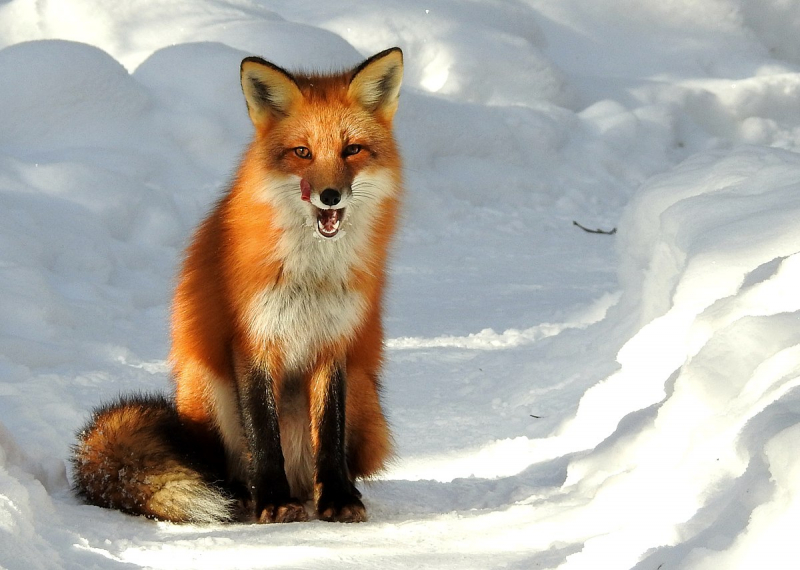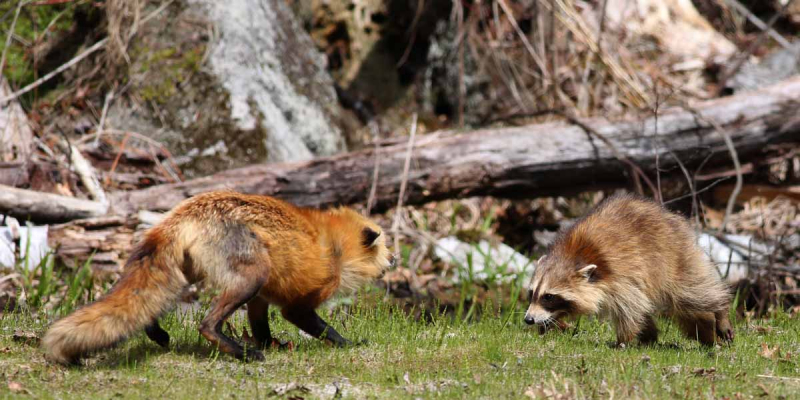Red fox
The red fox (Vulpes vulpes) is the largest of the genuine foxes and one of the most extensively dispersed members of the order Carnivora, occupying most of North America, Europe, and Asia, as well as parts of North Africa. The IUCN considers it to be of the least concern. Its distribution has expanded in tandem with human growth, and it has been brought to Australia, where it is thought to be damaging to local mammal and bird species. Because of its prevalence in Australia, it has been named one of the world's 100 worst invasive species.
Red foxes are typically seen in couples or small groups made up of families, such as a mated pair with pups, or a male with multiple females with familial ties. The mated pair's offspring stay with their parents to help care for new kits. Small rodents are the species' primary prey, but they may also prey on rabbits, squirrels, game birds, reptiles, invertebrates, and young ungulates. Fruit and vegetable debris are also consumed on occasion. Although the red fox preys on smaller predators, including other fox species, it is prey to larger predators such as wolves, coyotes, golden jackals, large predatory birds such as golden eagles, and Eurasian eagles owls, and medium- and large-sized felines.
Raccoons and red foxes frequently share habitats and are both adaptive to new situations. They are both nocturnal species, however, foxes are frequently seen hunting or roaming between cover during the day. According to the University of Michigan, red foxes prefer rabbits, mice, and various fruits as a diet. Foxes are only slightly larger than raccoons, but they can still catch them. They employ the crucial mechanism of remaining hidden for as long as possible before attacking the raccoon, giving it little time to prepare. According to Zack DeAngelis, a red fox eating a raccoon is more likely to be roadkill than a fox chasing one. Foxes, on the other hand, will go after raccoon kits or juvenile raccoons since they are about the size of a rabbit. Red foxes are lonely animals. They do not form packs in the same way that coyotes and wolves do. As a result, a red fox is unlikely to consistently assault a raccoon. A specific condition, such as an old or ill raccoon or a very young raccoon, is more likely.














